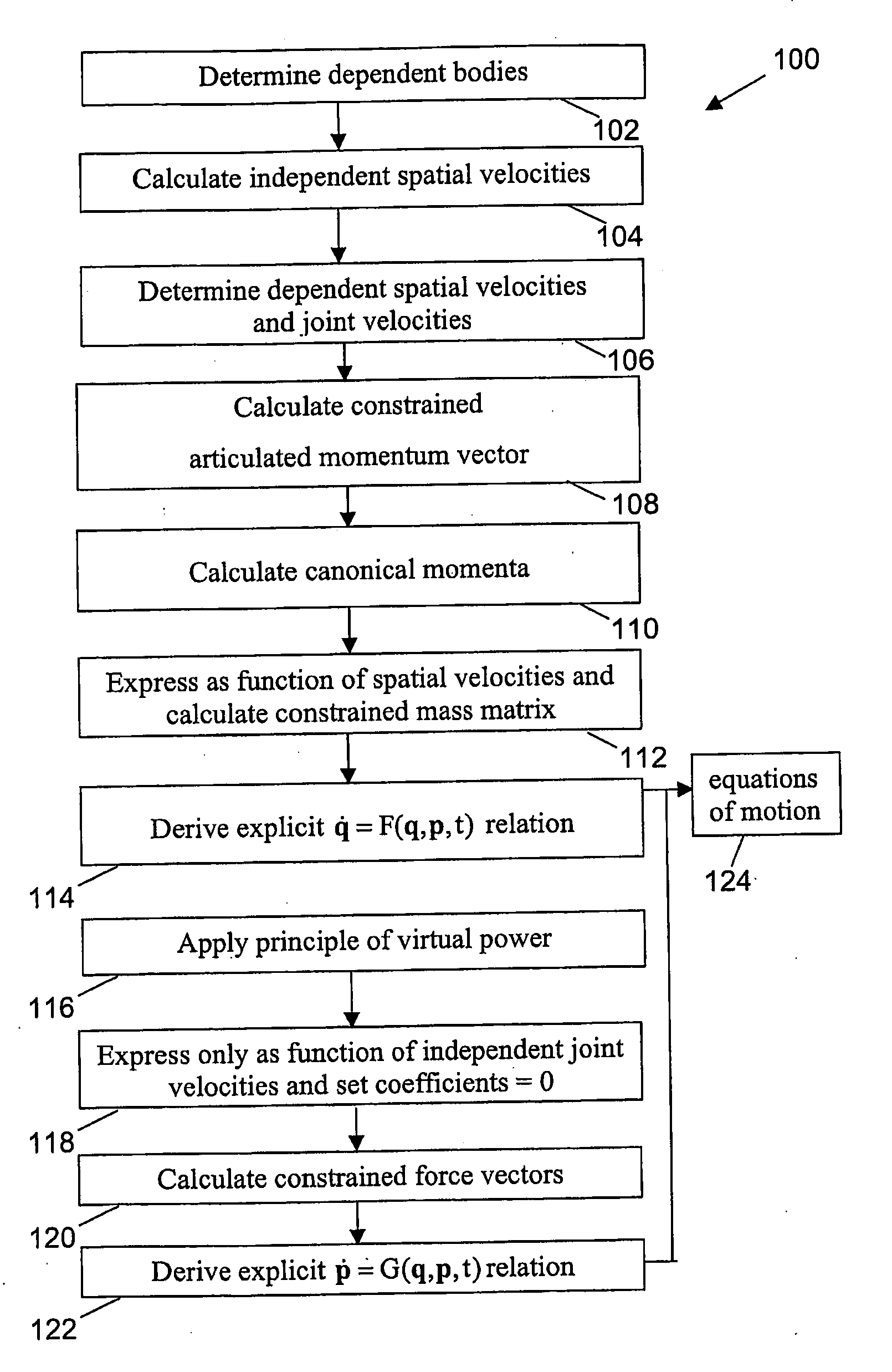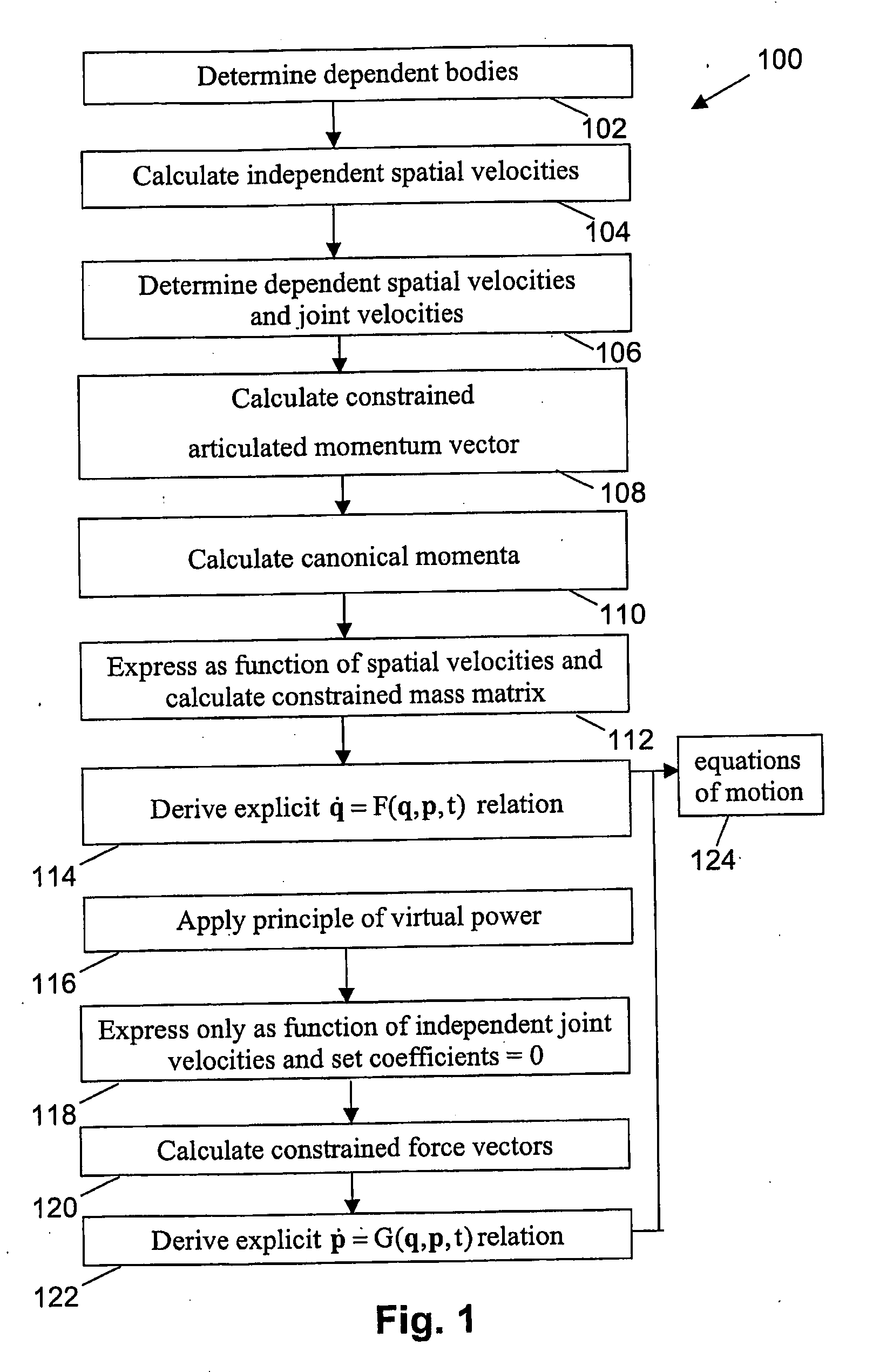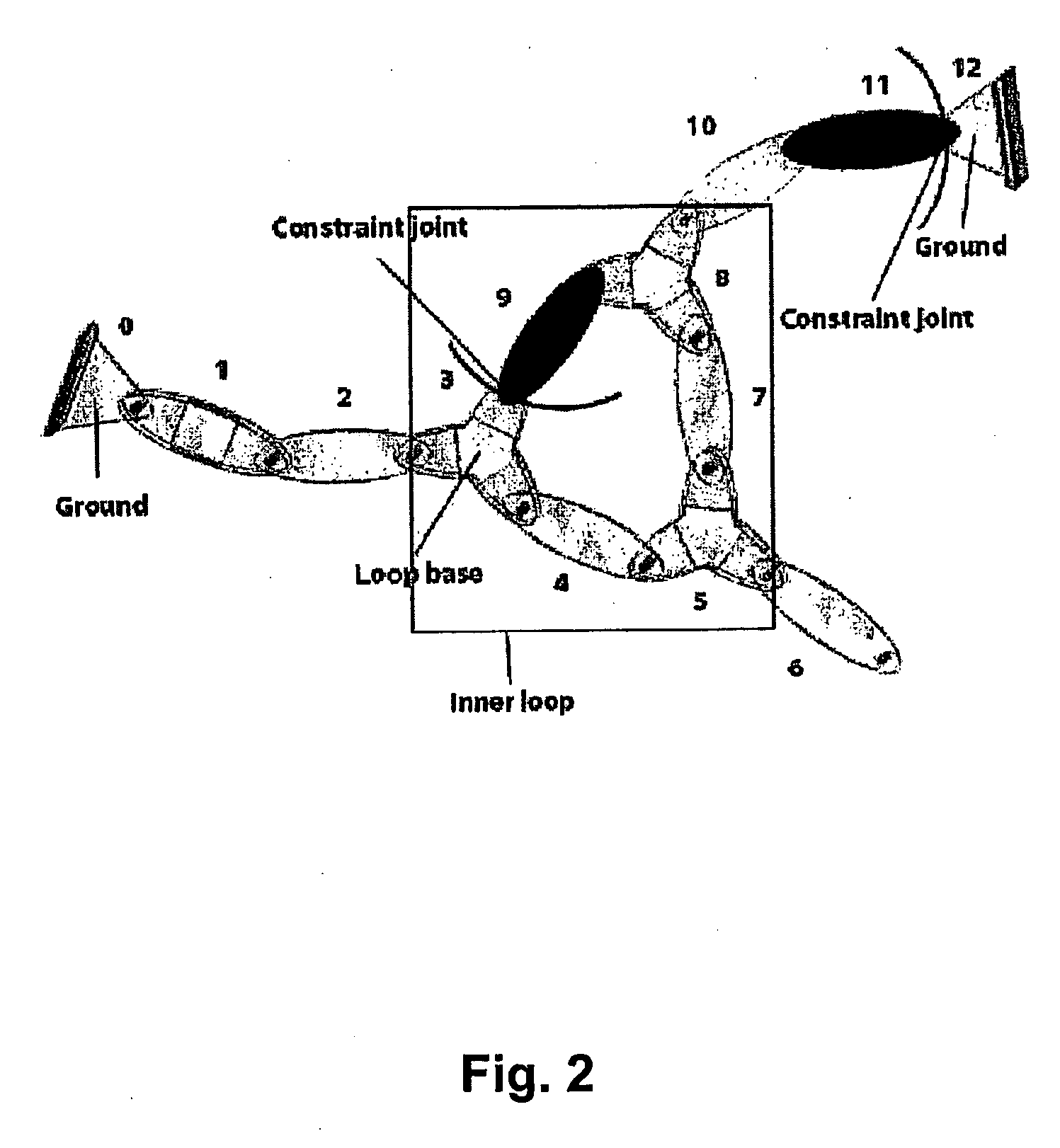System and method for simulating motion of a multibody system
- Summary
- Abstract
- Description
- Claims
- Application Information
AI Technical Summary
Benefits of technology
Problems solved by technology
Method used
Image
Examples
example 1
[0077]The first example 160 is a planar chain with N links 162, in the example shown in FIG. 3a there are nine links 162; one end is fixed to the non-moving environment by means of a pin-joint 164, and the other end is attached so as to be able to slide along a fixed rod 166. There are N+2 joint co-ordinates: one for each pin-joint 164 and an additional 2 for the ends of the chain. The number of degrees of freedom (DOF) is N−1, which means that 3 co-ordinates are to be chosen as dependent. The method described above will now be applied to obtain a set of Hamiltonian equations of motion. One can choose the co-ordinates related to the last body and the constraint as dependent co-ordinates: qN and qc, the last vector being a vector with 2 co-ordinates. The motion of a rigid body K can be described by the so-called spatial velocity ΩK.
ΩK=(vω)K[26]
It is possible to express the spatial velocity of a dependent body as a function of the spatial velocity of the adjacent inboard body, as will...
example 2
[0086]Consider the next example. It is a planar chain with a loop. This system has N−2 degrees of freedom, closing the loop introduces 2 additional constraints and one extra joint, which will be described by joint velocity (vector) {dot over (q)}C. As a consequence, there are 3 dependent co-ordinates. Body C and body L are basically the same, but a different local reference frame is used. The procedure for obtaining the dependent spatial velocities is similar to that used in previous example. Body C has spatial velocity:
ΩC=CTNVΩN+EC{dot over (q)}C=CTLVΩL [59]
[0087]The relationship between ΩC and ΩL is described by the velocity field in the rigid body. After projection on subspace EC, one gets:
q.C=-(ECTEC)-1ECTTNVC(ΩN-TLVNΩL)[60]=CqCTTNVC(ΩN-TLVNΩL)[61]
Substitution in equation [59] results in
CCCTNV(ΩN−NTLVΩL)=0 [62]
with
CC=I+ECCqCT [63]
This procedure can be repeated recursively for all dependent bodies. The next body N gives (premultiplying by ENTNTCF this time)
q.N=-(ENTTN+1FNCCTNV...
example 3
[0109]In the third example, the method of the present embodiment is illustrated for a planar chain with both ends fixed as described in FIG. 5a. The last two bodies, i.e. body 3 and body 4, are considered as dependent, illustrating that the method as described in the present embodiment also covers the occurrence of dependent coordinates at the end of an underlying open-loop structure, as described in the first embodiment.
Writing the principle of virtual power for the whole system yields
∑i=14[Ωi*T(P.i+Ω×Pi-Ti)]=0[237]
The major difference with an open-loop case is that the virtual joint velocities {dot over (q)}*i are not independent to each other. It is to be observed that the spatial velocities of the last two dependent bodies are known if the spatial velocity of body 2 is given. The details of the motion of body 1 does indeed not matter and it will be shown that the spatial velocities Ω3 and Ω4 can be expressed as functions of spatial velocity Ω2.
This will enable to write the princ...
PUM
 Login to View More
Login to View More Abstract
Description
Claims
Application Information
 Login to View More
Login to View More - R&D
- Intellectual Property
- Life Sciences
- Materials
- Tech Scout
- Unparalleled Data Quality
- Higher Quality Content
- 60% Fewer Hallucinations
Browse by: Latest US Patents, China's latest patents, Technical Efficacy Thesaurus, Application Domain, Technology Topic, Popular Technical Reports.
© 2025 PatSnap. All rights reserved.Legal|Privacy policy|Modern Slavery Act Transparency Statement|Sitemap|About US| Contact US: help@patsnap.com



